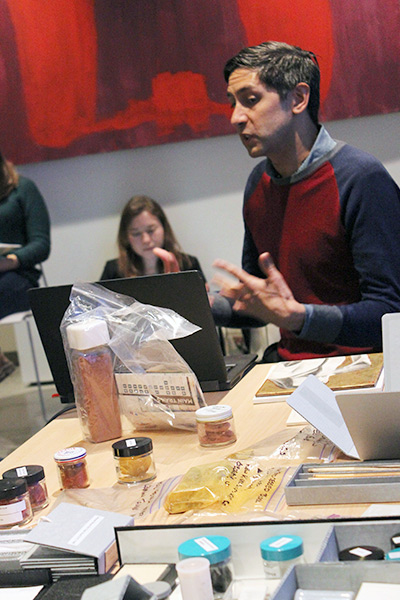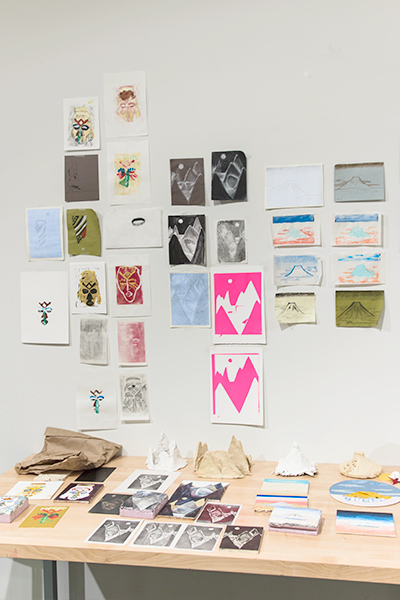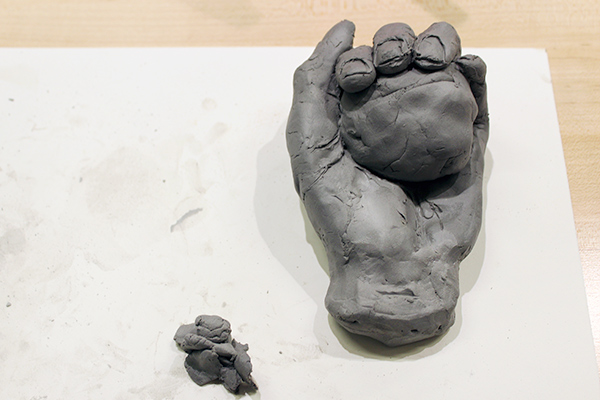Art appreciation and investigation intersect in the Materials Lab, a one-of-a-kind studio space on the Lower Level of the Harvard Art Museums. Here, students, faculty, staff, visiting artists, conservators, and members of the public can probe the underlying principles of art making and examine the dynamic relationship between materials, makers, and tools.
“In the Materials Lab we ask questions like, what kinds of choices and challenges do materials and techniques pose for artists as well as for scholars and conservators?” said Francesca Bewer, the museums’ research curator for conservation and technical studies programs. “And how does a more nuanced appreciation of art making affect one’s aesthetic experience?”
Through small-group workshops, participants have the chance to engage directly with a variety of techniques and mediums, usually after they’ve had close encounters with original works of art in the galleries or the Art Study Center. Hands-on projects have included plaster casting, pigment making, screenprinting, light manipulation, and more. Harvard classes, including Introduction to Materials and Methods of the Artist, have also effectively used this space as a site for experimentation and focused learning.
The studio is a particularly powerful resource for the Summer Institute for Technical Studies in Art (SITSA), an intensive two-week summer residency program funded by the Andrew W. Mellon Foundation. Designed to explore object-focused technical inquiry, methodologies, and instruction, SITSA brings together a small cohort of doctoral art history students from across North America to study various artists’ materials and techniques, methods of examination, analysis, and conservation through activities and interactions with experts from Harvard and other nearby institutions.
“Like the Materials Lab itself, SITSA aims to offer participants a forum in which to develop critical skills in the interpretation of object-based, technical analyses,” Bewer said. Essentially, this innovative program and the unique environment of the Materials Lab are geared toward shaping a new generation of “ambassadors” and advocates who will bring an interdisciplinary technical approach to the art historical field.




